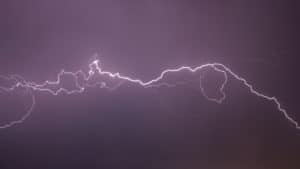Lyme disease at its core is a chronic infection. Most cases of Lyme disease in the U.S. are caused by a corkscrew-shaped spirochete called Borrelia burgdorferi. This organism has a unique way of evading the human immune system starting as early as when the tick bite occurs and has learned to survive in the human body even when aggressive treatment attacks are mounted against it.
Once the Borrelia burgdorferi bacterium is in the body, it starts to change its form by altering the proteins on its outer cell wall, effectively hiding itself from the immune system. Typically, when a foreign invader assaults the body, the immune system detects it by its cell-wall proteins, developing specific antibodies to launch an immune attack. But with the ability to change its outer-cell-wall proteins, the Lyme bacteria becomes hidden from the immune system, almost like an invader who suddenly dons a disguise. The immune system is looking for a specific cell-wall protein, but the Lyme no longer wears that protein, and thus cannot be found.
As the body continues its assault on the Lyme bacteria – sending immune cells to fight the now-disguised organism – this immune response wreaks havoc in places throughout the body such as the skin, brain, nerves, and joints. Because the bacterium continues to shift its “appearance” by changing its outer-cell-wall proteins, it continues to evade the immune system. Yet the attack has already begun, as the immune system continues to send neutrophils, monocytes, dendritic cells, and macrophages to fight the invader.
Unfortunately, these immune cells aren’t successful at killing the infection. Instead, the toxic compounds they release in the fight cause inflammation everywhere in the body and damage tissues in essentially every organ in the body. This chronic inflammation is responsible for a significant amount of symptoms associated with Lyme disease. This constant stress on the immune system and chronic inflammation also strains the body’s detoxification pathways. As a result, when Lyme patients support their detoxification processes with treatments such as antibiotics or Ozone Therapy, it is common to experience a Herxheimer Reaction.
The Herxheimer response is a natural bodily process triggered by a greater prevalence of endotoxins. These substances are released when harmful microorganisms and bacteria are destroyed or die off. As damaging bacteria are destroyed, they release previously contained endotoxins into the bloodstream. This allows the toxins to be transported to the appropriate system and subsequently expelled from the body. However, rapid destruction of bacteria can cause an influx of endotoxins resulting in greater toxicity. When this occurs, the immune system responds by triggering an acute immune response resulting in inflammation that may be experienced throughout the body. This can cause worsening of current symptoms and the development of new flu-like symptoms such as brain fog, lethargy, chills cold sweats, sore throat, muscle pain, and more.
Learn more about symptoms of a Herxheimer Reaction here
Most Herxheimer Reactions, like a flu, only last a couple days to a week but those who are dealing with the intense detoxification of endotoxins may endure symptoms for longer.
Lyme Co-Infections & Herxheimer Reactions
Prolonged Herxheimer Reactions are often experienced by Lyme patients who are also battling a co-infection.
A survey of chronic Lyme-infected individuals found that 50% had at least one co-infection, while almost 30% had at least two. For these patients, experts state that there is an increased likelihood of a Herxheimer Reaction occurring when supporting detoxification processes.
This is because a Herxheimer Reaction is typically due to the endotoxins released in response to the presence of the sprirochetes. It is common to experience this response within 24 hours of antibiotic treatment and even holistic treatments such as Ozone Therapy. Other spirochete infections that have been associated with a Herxheimer reaction include syphilis and leptospirosis. Learn more about other conditions linked to Herxheimer Reactions
Relieving Herxheimer Reaction Symptoms
The Herxheimer reaction is a natural response to the destruction of harmful bacteria and other threatening microorganisms and is often endured by patients to enjoy the long-term benefits of detoxifying treatments. Sleep, reducing toxin exposure, supplementation, and drinking plenty of liquids is typically enough to relieve the symptoms, but if you have questions about how to best deal with a Herxheimer Reaction, please contact us today.


